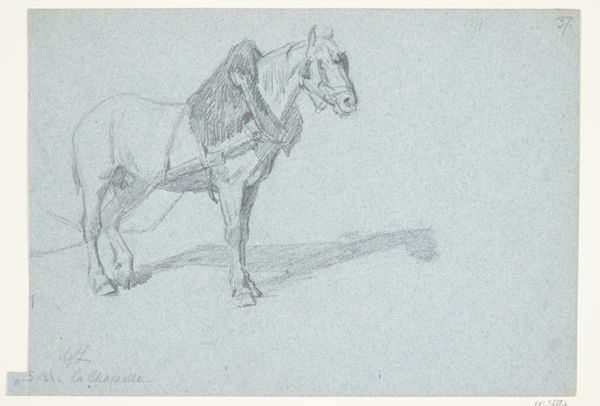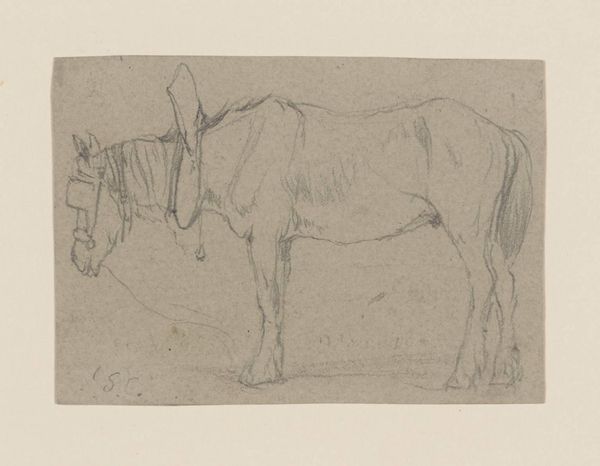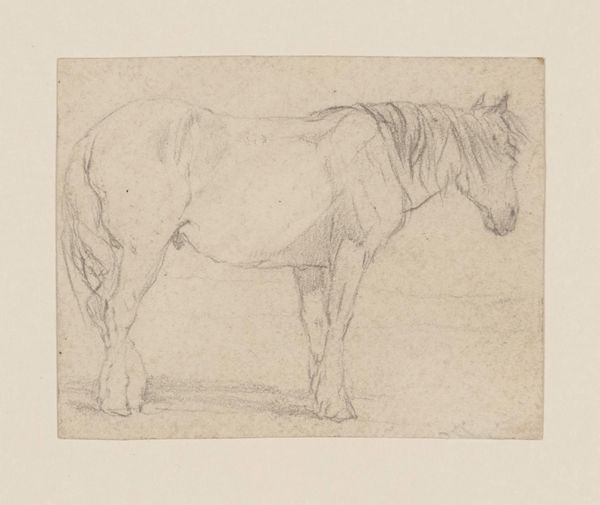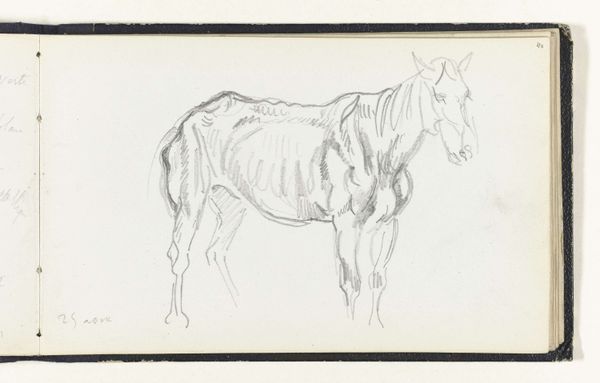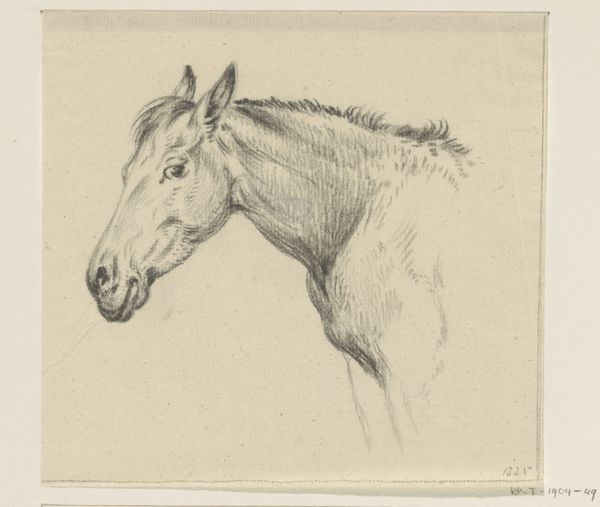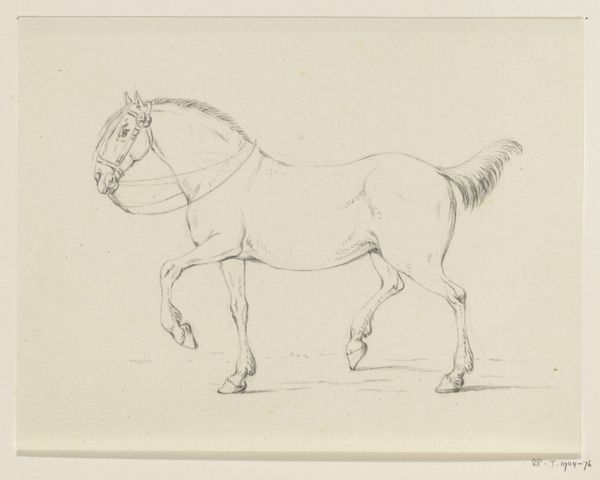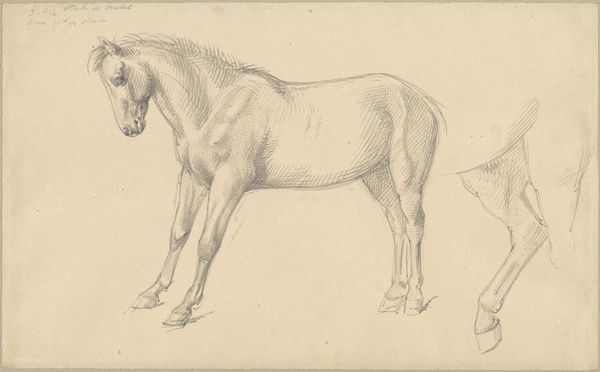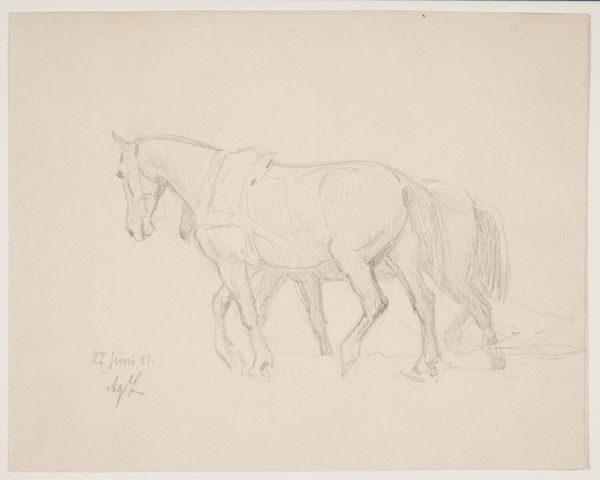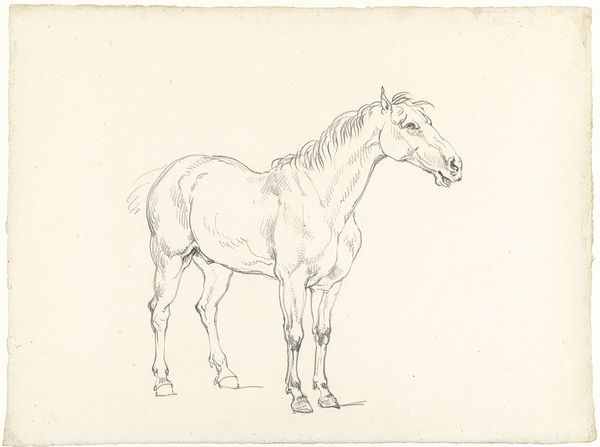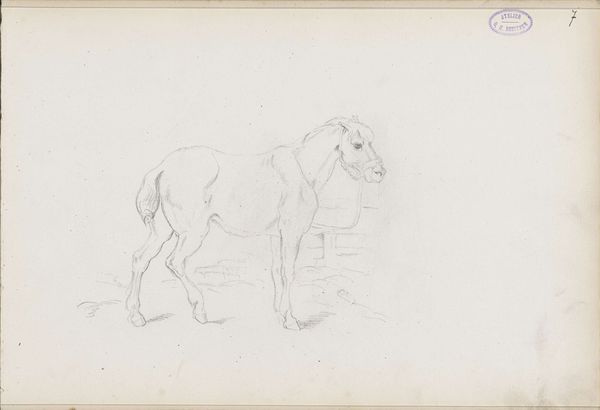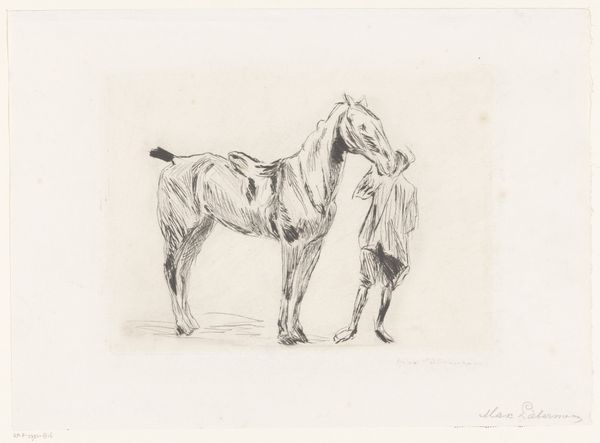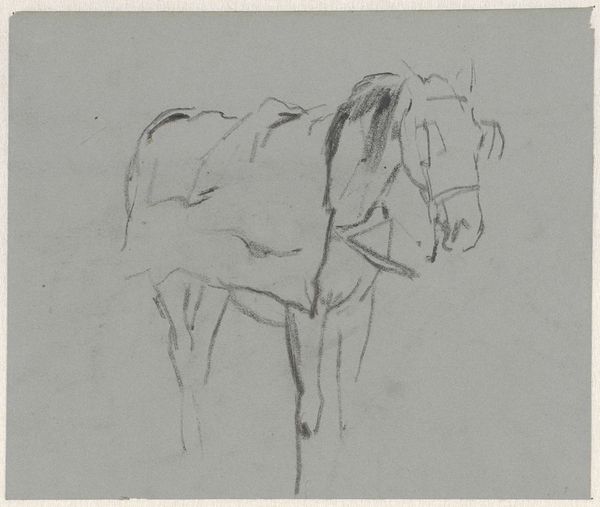
drawing, pencil
#
drawing
#
baroque
#
animal
#
landscape
#
form
#
pencil
#
horse
Dimensions: height 305 mm, width 400 mm
Copyright: Rijks Museum: Open Domain
Curator: Here we have a drawing entitled "Getoomd en gezadeld paard, naar rechts," which translates to "Bridled and saddled horse, facing right." It was created by Pieter van Bloemen sometime between 1667 and 1720. Editor: My first thought is the horse looks so still, almost melancholic. The blue paper really sets off the gray pencil strokes and creates a subdued mood. Curator: Van Bloemen was well-known for his animal studies, particularly horses. It's fascinating how he captures not just the animal's likeness but also the material reality of its tack. He spent a good deal of his working life in Italy, as part of the Northern European artists’ colony based in Rome. Editor: I'm drawn to the meticulous details of the saddle and bridle, but also how that careful representation interacts with the smooth rendering of the horse's body. It looks as if Bloemen studied each strap, buckle and piece of leather. It's all work made, an interaction of horse and equipment that are combined in service. Curator: That level of detail probably catered to a specific market. Equestrian culture was booming amongst the European elite, who saw horses as symbols of power and status, and their association with military success or sporting prestige, as portrayed, say, by Wouwerman. Bloemen capitalized on that social current. Editor: And it makes you wonder about the labor involved in both the horse’s training, and the production of its accoutrements. The leatherwork would’ve been a craft in itself, a skilled trade. Think about how those details connect this drawing to the workshops of the time. Curator: Absolutely. And it also highlights the institution of art academies, shaping artistic vision around classical forms and ideals. It also points to how depictions like these solidified power dynamics – the tamed horse as a symbol of man’s dominion. Editor: The image reveals to us then, the networks of production, consumption, labor, and skill inherent to this depiction of a horse and how they come together and reflect broader societal norms and values. Curator: Indeed, by exploring this drawing through these intersecting lenses, we uncover a tapestry of history, society, and the enduring allure of the equestrian world. Editor: Right, it's a drawing of a horse, yes, but it reflects something deeper if we’re willing to pull at the threads and look closely.
Comments
No comments
Be the first to comment and join the conversation on the ultimate creative platform.
